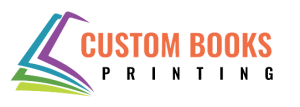Table of Contents
TogglePrint-On-Demand (POD) and traditional publishing are two different types of methods to acquire your book into the hands of readers. Each and every single approach provides exclusive benefits and considerations, and the determination of which path to pursue relies on your particular objectives, resources, and preferences as an author. Here are some advantages and considerations of print on demand (POD) and traditional publishing, which are discussed below in detail:
1. Print-On-Demand (POD):
Print-on-demand (https://custombooksprinting.com/book-printing/print-on-demand/) is a publishing method where books are printed individually as orders are received, eliminating the need for bulk printing and allowing for efficient production and distribution.
- Control:
Print-on-Demand offers authors with an essential level of control over the publishing procedure. With print on demand (POD), you have the freedom to make decisions with reference to the formatting of the book, cover design, pricing, and release timeline of your book. This control authorizes you to maintain your creative view and make adjustments as essential.
- Cost:
One of the main advantages of print-on-demand (POD) is that it removes the requirement for large upfront printing costs. Rather than printing a large quantity of books in advance, print on demand (POD) platforms generate books individually as orders are placed. This print-on-demand (POD) model can be beneficial in case that you have budget constraints or if you are undetermined about the demand for your book.
- Distribution:
Print-on-demand (POD) platforms like Amazon’s Kindle Direct Publishing (KDP), IngramSpark, and Lulu provide comprehensive distribution channels, creating your book available for purchase all around the world. These distribution platforms have partnerships with various online retailers, authorizing readers to order your book in physical or digital patterns. This broader distribution network offers convenience and availability for intended readers.
- Flexibility:
Print on Demand provides a considerable extent of flexibility for authors. In case that you find errors in your book or want to create modifications, you can easily produce a new version without significant trouble. This flexibility is specifically convenient for self-published authors who may not have the resources and help offered by traditional publishers.
Just the same these advantages, there are also some considerations when it comes to print on demand (POD):
- Marketing and Promotion:
While print-on-demand (POD) platforms provide the facilities of distribution, marketing and promotion, which are essentially the responsibility of an author or publisher. Self-published authors are required to diligently promote their books through different platforms of social media, online advertising, author websites, and other promotional efforts to create awareness and sales.
- Quality Control:
Since prints on demand (POD) books are produced apart, there is a potential for incompatible quality. Authors and publishers must make sure their book files are properly formatted and free of every error. Working with a professional editor and cover designer can support in maintaining a high standard of quality.
- Stigma:
While self publishing has achieved more approvals in recent past years, some readers, literary critics, and bookstores may still grasp a bias against self published books. Traditional publishing can offer a stamp of acceptance from established publishing houses, which can deliver credibility and enhance the chances of your book being displayed in physical bookstores.
2. Traditional Publishing:
Traditional publishing refers to the traditional model of book publishing, where authors and publishers submit their manuscripts to established and professional publishing companies who manage editing, design, printing, promotion, and distribution of the book.
- Validation:
Traditional publishing provides the validation of having your book approved and backed by a reputable and trustworthy publishing house. The strict and accurate selection procedure and the investment of the publisher in your work can deliver credibility and support with marketing and exposure. Being traditionally published can also give free access to opportunities like literary awards, speaking engagements, and media coverage.
- Resources and Expertise:
Traditional publishers have faithful teams of professionals with expertise in editing, cover design, promotion, and distribution. These resources alleviate the reduction of these challenges from the author, empowering them to concentrate more on writing. The cooperative nature of traditional publishing can increase the overall quality of your book and improve its chances of success.
- Advance and Marketing Support:
In traditional publishing, authors generally receive an advance payment upfront, delivering financial support during the entire book creation procedure. This advance payment can be specifically useful for authors who require financial support to cover expenses related to research, travel, or time off work.
Furthermore, traditional publishers generally assign marketing budgets and employ promotional approaches to enhance the visibility of the book. They have established relationships with several promoting platforms such as media outlets, book reviewers, and influencers, which can result in enhanced visibility and publicity for your book.
- Print Distribution:
Traditional publishers have established relationships with bookstores and booksellers, empowering for broader availability of your book in physical retail locations. This can be very beneficial if you believe that your intended audience prefers buying books in physical stores or in case that you want to reach readers who may not be active online book purchasers.
- Editorial Guidance:
One of the important advantages of traditional publishing is the editorial guidance offered by publishers. They basically allocate professional editors who work closely with authors or publishers to modify the manuscript, improve the storytelling, and enhance the complete quality of the book. The professional and industry knowledge of these editors can be crucial in improving your work and making sure it resonates with target readers.
Although, it is necessary to consider the following characteristics of traditional publishing as well:
- Loss of Control:
When you sign a contract with a traditional publisher, you may have to hand over some control over characteristics of your book, such as cover design, title selection, and even content edits. Publishers have a say in how your book is promoted, positioned, and distributed to the targeted audience, which may not associate perfectly with your original aspect.
- Lengthy Publishing Timeline:
Traditional publishing generally incorporates a longer timeline from procurement to publication in comparison to self publishing. This can be due to different kinds of factors, such as the internal procedures, editorial revisions, marketing plans, and the release schedule of the publishers. In case you have a limited amount of time or want to get your book out rapidly, traditional publishing may not be the best choice for you.
- Market Saturation and Genre Preferences:
Traditional publishers basically have particular choices when it comes to genres and market trends. They may be more willing to publish books that are suitable into famous or commercially viable categories. In case that your book falls outside these choices or finds niche subjects, it may be difficult to secure a traditional publishing deal.
- Hybrid Publishing:
Furthermore, to the two fundamental choices, there is also a hybrid publishing model that combines components of both print on demand (POD) and traditional publishing. A hybrid publisher provides authors a combination of professional services, distribution channels, and innovative control while needing some level of financial investment from the author. This model can be captivating for authors who want the support and professionalism of a traditional publisher but still want to keep certain rights and control over their work.
Final Words:-
To cut the story short, selecting between print on demand and traditional publishing relies on your individual objectives, resources, and preferences. Print on demand (POD) offers greater control, cost efficiency, and flexibility, making it fit for authors with limited budgets or those who prefer innovative independence.
On the other hand, Traditional publishing provides validation, professional assistance, and wider physical distribution channels, making it a perfect choice for authors who are searching for the credibility and resources offered by established publishing houses. Discovering hybrid publishing can also provide a middle ground that balances control and support. Examine your priorities, research the publishing framework, and think about seeking advice from industry professionals or authors who have followed various paths to make an informed decision. Keep in mind, the publishing landscape is changing day by day, and the best option for you may depend on the particular circumstances of your book and your long term career objectives as an author.














